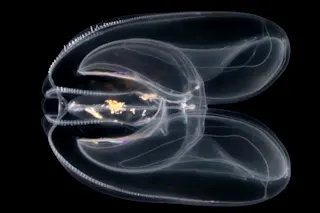A new study has shown that people with symmetrical bodies are judged more attractive by members of the opposite sex, even though the degree of symmetry may be impossible to discern by the naked eye. But researchers say the test subjects were mostly responding to more obvious body characteristics that have been shown to be linked to symmetry; namely broad shoulders and tall stature in men, and small torsos and an "hourglass" shape in women. Researchers hypothesize that a symmetrical body may indicate a healthy person with an evolutionary advantage.
"In animals with two sides that were designed by natural selection to be symmetrical, subtle departures from symmetry may reflect poor development or exposure to environmental or genetic stress," said study team member William Brown of Brunel University in the U.K. "In many species these departures are related to poor health, lower survival, and fewer offspring" [National Geographic News].
To ...













